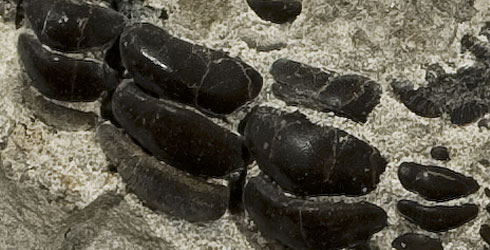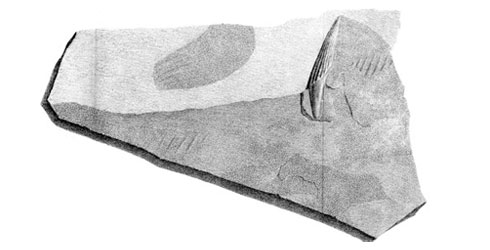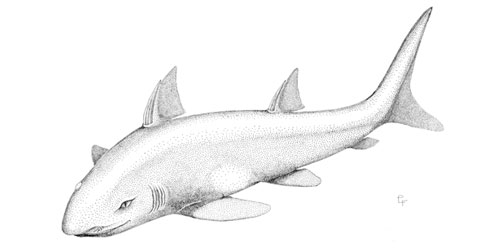Wodnika striatula (Zechstein shark)
Wodnika striatula or the Zechstein shark is an extinct fossil shark, which lived 257million years ago during the Late Permian period. Wodnika lived in the Zechstein Sea which covered part of northern Europe at the time.
Wodnika striatula is a rare shark first described in 1843 by Georg Graf zu Münster from only a partial specimen showing a dorsal fin spine and part of the fin.
Usually only the teeth and spines of Wodnika (and most other fossil sharks) are preserved as fossils, but recently a the only known complete specimen was acquired by the Museum showing full details of the shark. The shark, which was discovered in Durham, is 240 million years old.
Species detail
Wodnika striatula has a number of distinct features:
- Fin spine - distinctive supporting spine at the anterior edge of each dorsal fin, which probably acted as a cutwater to improve swimming performance.
- Flattened bean-shaped teeth - aligned close to each other, forming dental plates in the upper and lower jaws. Used against each other to crush and grind food.
- Claspers - organs on males, used for internal fertilisation during mating.
The Museum’s complete specimen is a female and so there are no claspers present.
-

Taxonomy
Find out about the taxonomy of this rare shark, how long it is thought to have survived and other sharks it shared similarities with.
-

Distribution
Discover where Wodnika striatula was found and the type of water it would have lived in.
-

Evolution
Read more about how Wodnika striatula, the Zechstein shark, is thought to have evolved.
-

References
Reference material for Wodnika striatula.
Images

Wodnika striatula reconstruction

Wodnika had bean-shaped teeth that enabled it to crush and grind up its food.

Wodnika striatula fossil.

Fossil showing a Wodnika striatula dorsal fin.
Author
Dr Alison Longbottom, Department of Palaeontology.
Toolbox
Research projects
Wodnika is being studied by researchers from the Natural History Museum, Palaeontology Department and the American Museum of Natural History.
